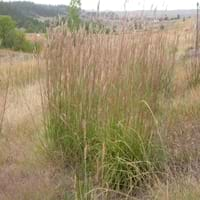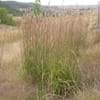Life Span
Perennial
Perennial
Type
Grass
Flowering Plants, Shrubs
Origin
North America, United States, Northeastern United States, Mid-Atlantic United States, Southeastern United States, North-Central United States, Central United States, South-Central United States, Southwestern United States, Texas, Canada, Mexico
Eastern Asia
Types
Not Available
Not Available
Habitat
meadows, Prairies, Riverbanks, Roadsides, Woods
Barren waste areas, disturbed sites, Fields, Forests, Wet lands
USDA Hardiness Zone
2-7
4-11
AHS Heat Zone
7 - 1
Not Available
Sunset Zone
1a, 1b, 2a, 2b, 3a, 3b, 4, 5, 6, 7, 8, 9, 14, 15, 16, 17, 18, 19, 20, 21, 22, 23, 24
Not Available
Habit
Clump-Forming
Cushion/Mound-forming
Flower Color
Purple
White, Yellow
Flower Color Modifier
Bicolor
Bicolor
Fruit Color
Not Available
Black
Leaf Color in Spring
Green
Green
Leaf Color in Summer
Light Green
Green
Leaf Color in Fall
Blue Green, Burgundy, Bronze
Green
Leaf Color in Winter
Tan, Sandy Brown
Green
Leaf Shape
Grass like
Oval
Plant Season
Summer, Fall, Winter
Summer
Sunlight
Full Sun, Partial Sun
Full Sun, Partial shade
Type of Soil
Loam, Sand
Well drained
The pH of Soil
Neutral, Alkaline
Neutral
Soil Drainage
Well drained
Well drained
Bloom Time
Late Summer, Early Fall, Fall
Late Winter, Spring, Summer
Tolerances
Not Available
Drought
Where to Plant?
Container, Ground, Pot
Ground
How to Plant?
Seedlings
Layering, Seedlings, Stem Cutting
Plant Maintenance
Medium
Medium
Watering Requirements
Average Water Needs, Do Not over Water, Medium
Get enough water whenever the soil is dry
In Summer
Lots of watering
Lots of watering
In Spring
Moderate
Moderate
In Winter
Average Water
Average Water
Soil pH
Neutral, Alkaline
Neutral
Soil Type
Loam, Sand
Well drained
Soil Drainage Capacity
Well drained
Well drained
Sun Exposure
Full Sun, Partial Sun
Full Sun
Pruning
Remove damaged leaves, Remove dead branches, Remove dead leaves, Remove dead or diseased plant parts
Remove dead or diseased plant parts
Fertilizers
All-Purpose Liquid Fertilizer
All-Purpose Liquid Fertilizer, General garden fertilizer
Pests and Diseases
Red blotch
Not Available
Plant Tolerance
Not Found
Drought
Flower Petal Number
Single
Single
Foliage Texture
Medium
Not Available
Foliage Sheen
Matte
Not Available
Attracts
Birds, Butterflies
Bees, Birds, Butterflies
Allergy
Not Available
poisonous if ingested, Skin irritation
Aesthetic Uses
Ground Cover, Landscape Designing, Showy Purposes
Showy Purposes
Beauty Benefits
Not Available
Not Available
Edible Uses
Insignificant
Yes
Environmental Uses
Air purification, Food for animals, Prevent Soil Erosion
Air purification, Food for birds
Medicinal Uses
Not Available
Fever, Sore throat, Stomach aliments
Part of Plant Used
Leaves, Stem
Flowers, Leaves
Other Uses
Decoration Purposes, Food for animals
Making Perfumes, Used as Ornamental plant, Used for its medicinal properties
Used As Indoor Plant
Insignificant
No
Used As Outdoor Plant
Yes
Yes
Garden Design
Cutflower, Dried Flower/Everlasting, Mixed Border, Screening / Wind Break, Wildflower
Container, Cutflower, Dried Flower/Everlasting, Groundcover, Mixed Border, Rock Garden / Wall
Botanical Name
ANDROPOGON gerardii
Lonicera japonica
Common Name
Big Bluestem, Turkey Foot
Japanese Honeysuckle, suikazura, jinyinhua
In Hindi
Big Bluestem grass
जापानी Honeysuckle
In German
Große Bartgras
Japanese Honeysuckle
In French
Barbon de Gérard herbe
Chèvrefeuille japonais
In Spanish
hierba andropogon grande
madreselva japonesa
In Greek
Big BLUESTEM γρασίδι
Το ιαπωνικό αγιόκλημα
In Portuguese
Vetiver grande grama
Honeysuckle japonês
In Polish
Big Bluestem trawa
wiciokrzew japoński
In Latin
Big bluestem herba
CISSANTHEMOS Italica
Phylum
Magnoliophyta
Magnoliophyta
Class
Lillosida
Magnoliopsida
Family
Poaceae
Caprifoliaceae
Genus
Andropogon
Lonicera
Clade
Angiosperms, Commelinids, Monocots
Angiosperms, Asterids, Eudicots
Tribe
Not Available
Not Available
Subfamily
Not Available
Not Available
Number of Species
Not Available
Season and Care of Big Bluestem and Japanese Honeysuckle
Season and care of Big Bluestem and Japanese Honeysuckle is important to know. While considering everything about Big Bluestem and Japanese Honeysuckle Care, growing season is an essential factor. Big Bluestem season is Summer, Fall and Winter and Japanese Honeysuckle season is Summer, Fall and Winter. The type of soil for Big Bluestem is Loam, Sand and for Japanese Honeysuckle is Well drained while the PH of soil for Big Bluestem is Neutral, Alkaline and for Japanese Honeysuckle is Neutral.
Big Bluestem and Japanese Honeysuckle Physical Information
Big Bluestem and Japanese Honeysuckle physical information is very important for comparison. Big Bluestem height is 38.10 cm and width 152.40 cm whereas Japanese Honeysuckle height is 800.00 cm and width 800.00 cm. The color specification of Big Bluestem and Japanese Honeysuckle are as follows:
Big Bluestem flower color: Purple
Big Bluestem leaf color: Green
Japanese Honeysuckle flower color: White and Yellow
- Japanese Honeysuckle leaf color: Green
Care of Big Bluestem and Japanese Honeysuckle
Care of Big Bluestem and Japanese Honeysuckle include pruning, fertilizers, watering etc. Big Bluestem pruning is done Remove damaged leaves, Remove dead branches, Remove dead leaves and Remove dead or diseased plant parts and Japanese Honeysuckle pruning is done Remove dead or diseased plant parts. In summer Big Bluestem needs Lots of watering and in winter, it needs Average Water. Whereas, in summer Japanese Honeysuckle needs Lots of watering and in winter, it needs Average Water.





